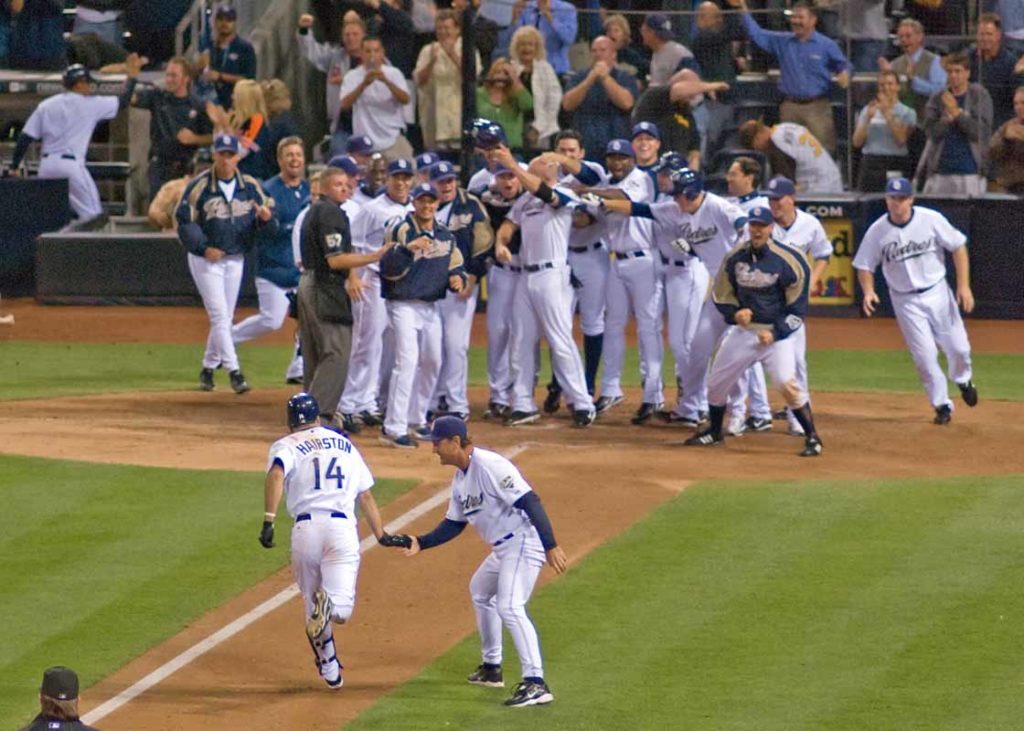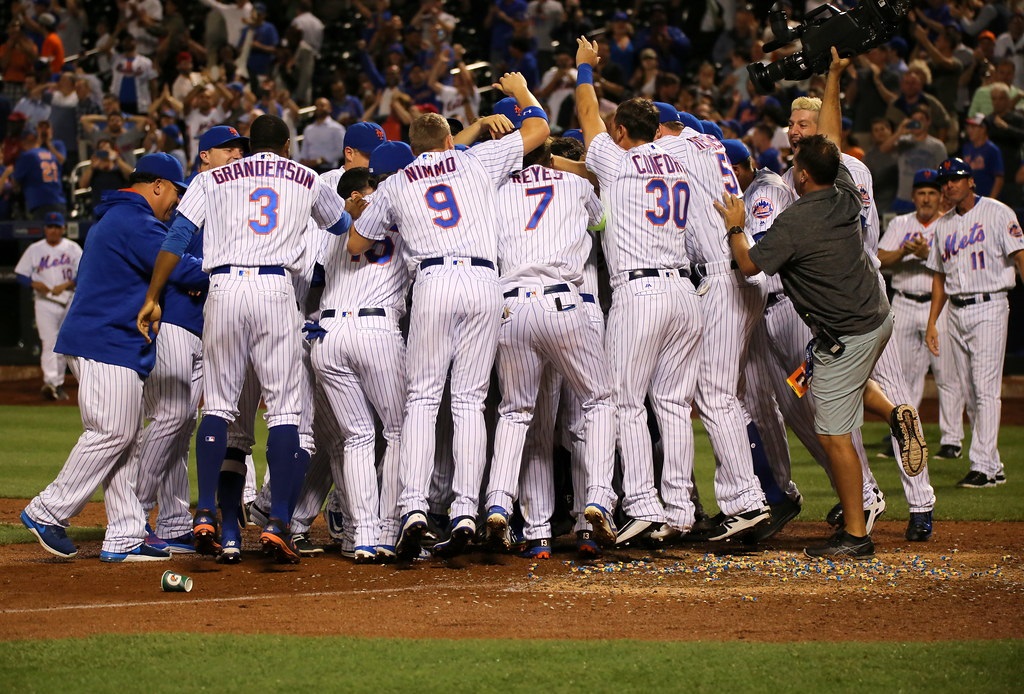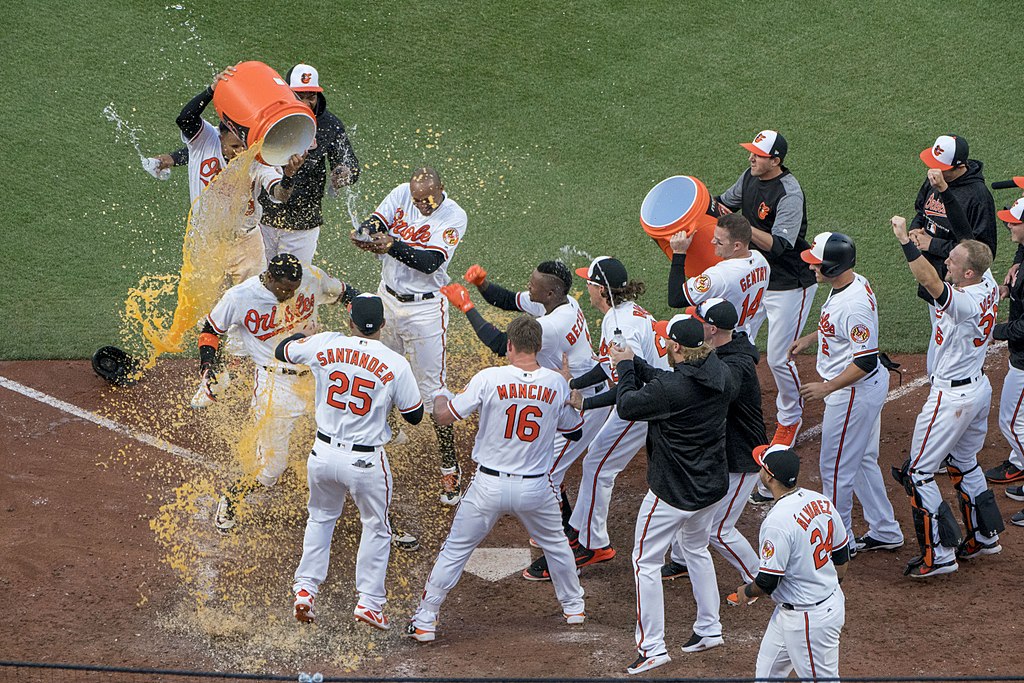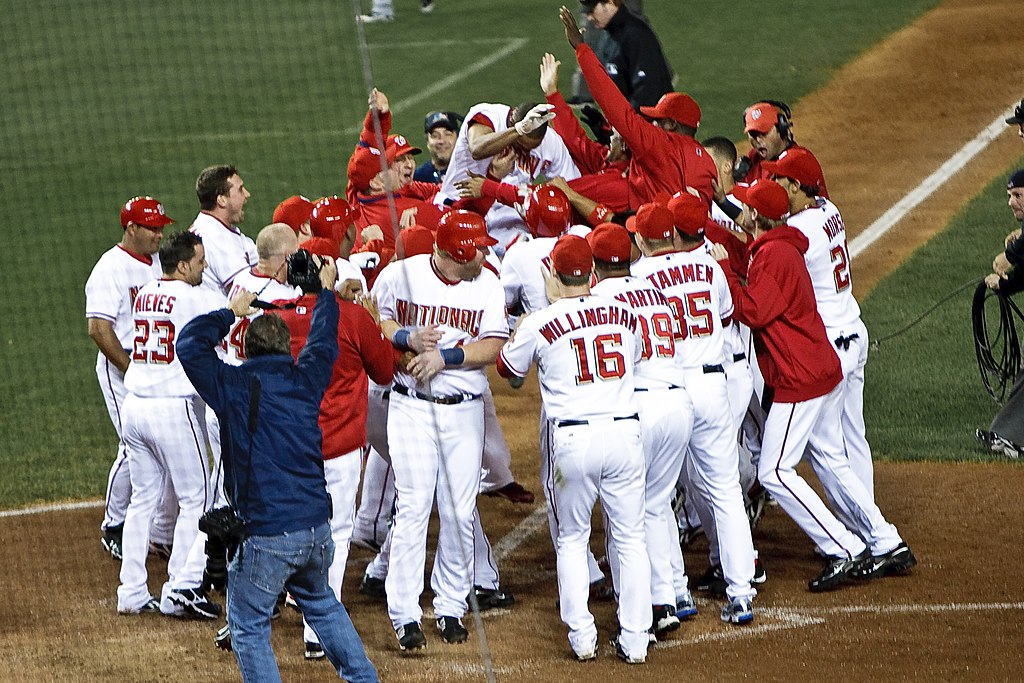Some games end with a moment of celebration, while others end with a moment of silence. Instead of celebrating a victory, the offensive team rushes out of the dugout and mobs one of their teammates. As for the defensive team, it’s another story as they’re trudging away in defeat. This scenario brings up a term used in baseball: the walk-off. So what exactly is a walk-off in baseball?
Simply speaking, a walk-off occurs when the home team scores the winning run in the bottom of the ninth. During these situations, singles and home runs account for the most walk-offs in baseball. However, errors, sacrifice flies, walks, and successful hits by batters that aren’t home runs don’t result in walk-offs.

Many terms in the unofficial baseball glossary have murky origins. But, it wasn’t until 1988 when the first coining of the walk-off term started becoming popular. It was after Dennis Eckersley, Oakland’s reliever, referred to a home run in a newspaper article as a walk-off piece. At first, he called it as a ‘home run that wins the game and the pitcher walks off the mound.’ However, coining that sentence is quite the mouthful, which eventually leads to the walk-off term.
How Does a Walk-Off Happen in Baseball?

A walk-off or walk-off home run in baseball is an event that gives the winning team the lead in the bottom of the ninth. The losing team will walk off the field immediately after the home team achieves the feat.
A walk-off can happen almost anywhere in baseball. It can be done even if the home team has the lead in the ninth or extra innings. Take note that any walk-off hit might need a baserunner to score the winning run.
Other walk-off scenarios, albeit less common, are also possible. For instance, if the bases are loaded, a wild pitch or hit-by-pitch could result in a walk-off or a hit-by-pitch. On other occasions, the game can end on a play where one out is recorded, which is known as a walk-off sacrifice fly. Less commonly, it’s possible to turn a double play by committing an error or failing to record an out.
A steal can also result in a walk-off, although it doesn’t happen as frequently as other occasions. A walk-off fielder’s choice can also happen. In this case, the infield tries to throw the ball to first base, but the runner gets around the bag. Since it doesn’t happen as the norm, a walk-off from a fielder’s choice will most likely credit the team with a fielder’s choice instead of a hit.
What are the Rules of a Walk-Off in Baseball?

Although the official MLB rules don’t have specifics regarding walk-offs, some pointers in the guidelines are worth mentioning. These elements are:
- As per Rule 6.09(d) and 7.05(a), batters gain credits for home runs only ‘when he shall have touched all bases legally.’
- As per Rule 7.10 and 7.12, batters are out, on appeals, for the failure of touching bases in order of a preceding runner.
- As per Rule 4.11(c) and 10.06(g), game-winning home runs can occur before matches end.
What is a Walk-Off Grand Slam?

A grand slam is a home run hit with the bases loaded. It is usually a walk-off home run. The last time a player hit two walk-off grand slams was in September 2020, at the time of writing. It was when Charlie Blackmon of Colorado Rockies went against the Los Angeles Angels.
Also, only five pitchers in MLB history achieved this incredible feat, which are:
- Satchel Paige of the St. Louis Browns (1952)
- Lindy McDaniel of the Chicago Cubs (1963)
- Lee Smith of the California Angels (1995)
- Francisco Rodríguez of the New York Mets (2009)
- Bud Norris of the Los Angeles Angels (2017)
Also, a walk-off grand slam that achieves to erase a three-run deficit is an ultimate grand slam. Further, only 29 instances of ultimate grand slams occurred in MLB history.
What is the Most Famous Walk-Off?
In the video above, you can see Kirk Gibson being called in to pinch-hit for the Los Angeles Dodgers. Why is this the most famous walk-off in MLB history? It’s because Gibson achieved this endeavor while nursing several injuries.
Other Walk-Offs Worth Mentioning
- The Los Angeles Dodgers led all major league teams with 12 walk-off wins in 2019.
- The Pittsburgh Pirates have the record for most walk-offs in one season.
- Jim Thome holds the record for most walk-off home runs in his career.
- Before 1913, home teams were required to hit first to start a game. Since then, visiting teams have been able to do it since 1901.
- Like Merkle’s Boner, runs were erased on a walk-off grand slam. In 1999, Robin Ventura of the Mets hit a walk-off grand slam in the 15th inning of a game against the Atlanta Braves. However, since his teammates mobbed him after he rounded first base, the final score was 4-3, which resulted in a loss for the Mets.
Final Words
A walk-off is an offensive play that gives a home team the lead in the bottom of the ninth. If this event happens, the offensive team generally celebrates by going out of their dugout to celebrate in the field. This achievement is quite difficult to perform, which is why only some teams in MLB history attained this feat.






